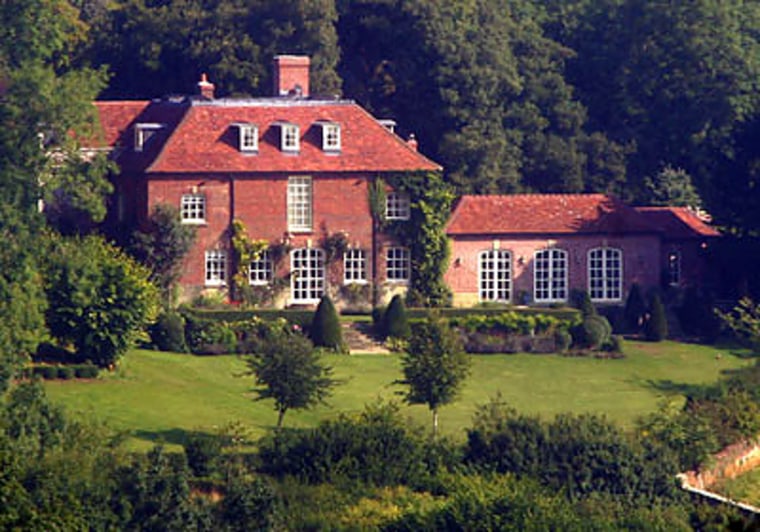Underneath it all, celebrities may be just like the rest of us. But that doesn’t mean that behind it all — privet hedges, wrought-iron gates and watchful doormen — they live like your average American.
Sure, they tend to cluster with people of like minds and incomes, just like everyone else. But that means the Malibu bluffs, Aspen slopes, Hamptons beaches and Miami waterfront.
They want the best they can afford — and more, opines New York City-based architect and interior designer Evan Galen, who has worked with celebrity clients.
“That’s the same with all people, from the poorest to the richest,” he says. “How come I don’t have one more room? How come my Picasso etching isn’t a Picasso painting?”
They have a range of tastes — some like edgy modern mansions, others glass-walled penthouses or vintage estates. But unlike many of us, they can afford to indulge those desires. Once upon a time, actors Brad Pitt and Jennifer Aniston opted for a huge Wallace Neff-designed estate in Beverly Hills, Calif., which is now in escrow for $22.5 million. Hip-hop mogul Sean “P. Diddy” Combs has a glitzy spread in Alpine, N.J., as well as a three-bedroom Manhattan condo with views of Central Park. In New York’s Hamptons, actors Renée Zellweger and Nathan Lane have separately chosen charming, low-key houses that are characteristic of the area.
And like the rest of us, celebrities consider their homes sanctuaries. But getting a little peace and quiet can be difficult when magazines are willing to pay thousands of dollars for a shot of you shopping in your sweats or picking up the kids’ toys on the lawn.
"Celebrities are concerned with privacy and security in a way that’s understandable and not paranoid," according to Diane Saatchi, a broker for The Corcoran Group in New York’s Hamptons, who has had plenty of experience with celebrity clients — whose names she protects. “They’re more likely to be concerned about finding a house that’s not visible from the road. This is especially true for celebrities who have children.”
There’s another element to celebrities' desire for privacy, Galen says: They don't always want people to know that their residences don’t match their public personae. One of Galen’s clients, whom he declined to name, owned an apartment in the Dakota, an exclusive co-operative apartment building on Manhattan’s Central Park West that was once home to John Lennon, as well as a large property in Greenwich, Conn. Despite her wealth and servants, she wore hand-me-downs as part of her persona and kept the gorgeous interiors out of sight.
“The real truth is that if somebody is selling themselves as down-home, they don’t want it to be known that they live in a big estate," Galen says. "That’s why a lot of people are very, very circumspect about letting any picture be taken, letting anything be known.”
To keep such secrets, celebrities often have their real estate agents and other representatives sign confidentiality agreements — but at other times, they are willing to attach their name to a property on the market. The star aura can bring more attention to a residence, though not necessarily a higher price for it, says Paddington Zwigard, a broker for Brown Harris Stevens in New York who recently had actor Harvey Keitel’s Tribeca loft on the market. She'll say something subtle like "celebrated loft" rather than advertise that the former occupant is a celebrity.
Working on behalf of a well-known entertainer can mean previewing properties in advance, since the clients are often on shoots or on tour, and squeezing in rapid-fire showings. Zwigard requests that clients give her an hour or two in advance. Then she tries to show them at least four things in an hour. "If something hits you, we’ll come back and revisit it," she tells them.
But even with people who are wealthy and well known, it all comes down to matching the right person with the right place, Zwigard says.
“I really try to spend a lot of time talking to somebody at the beginning and finding out what they want,” she says. “It feels great when you get a person and it clicks.”
As long as the click isn’t a camera shutter. No photos, please.
